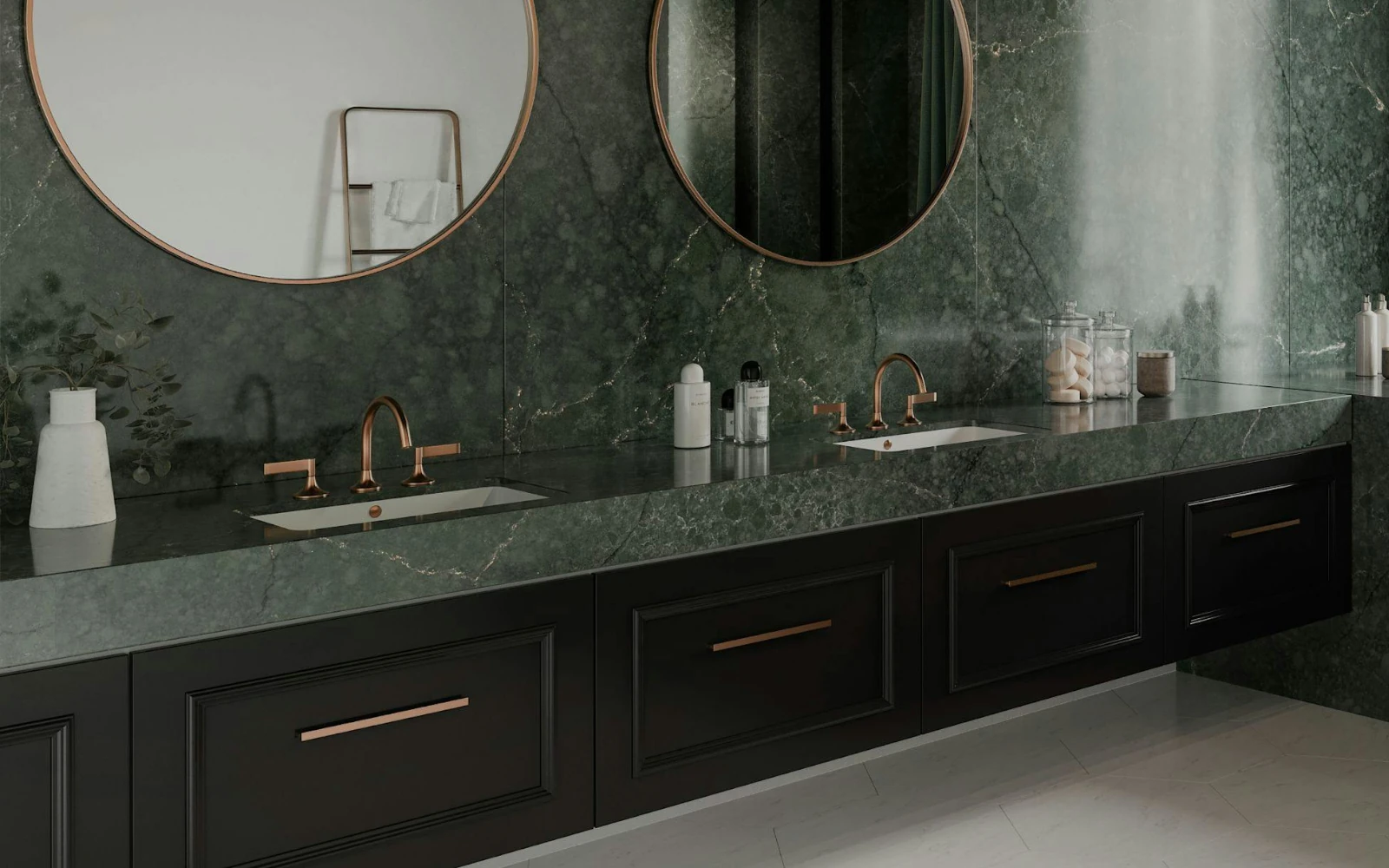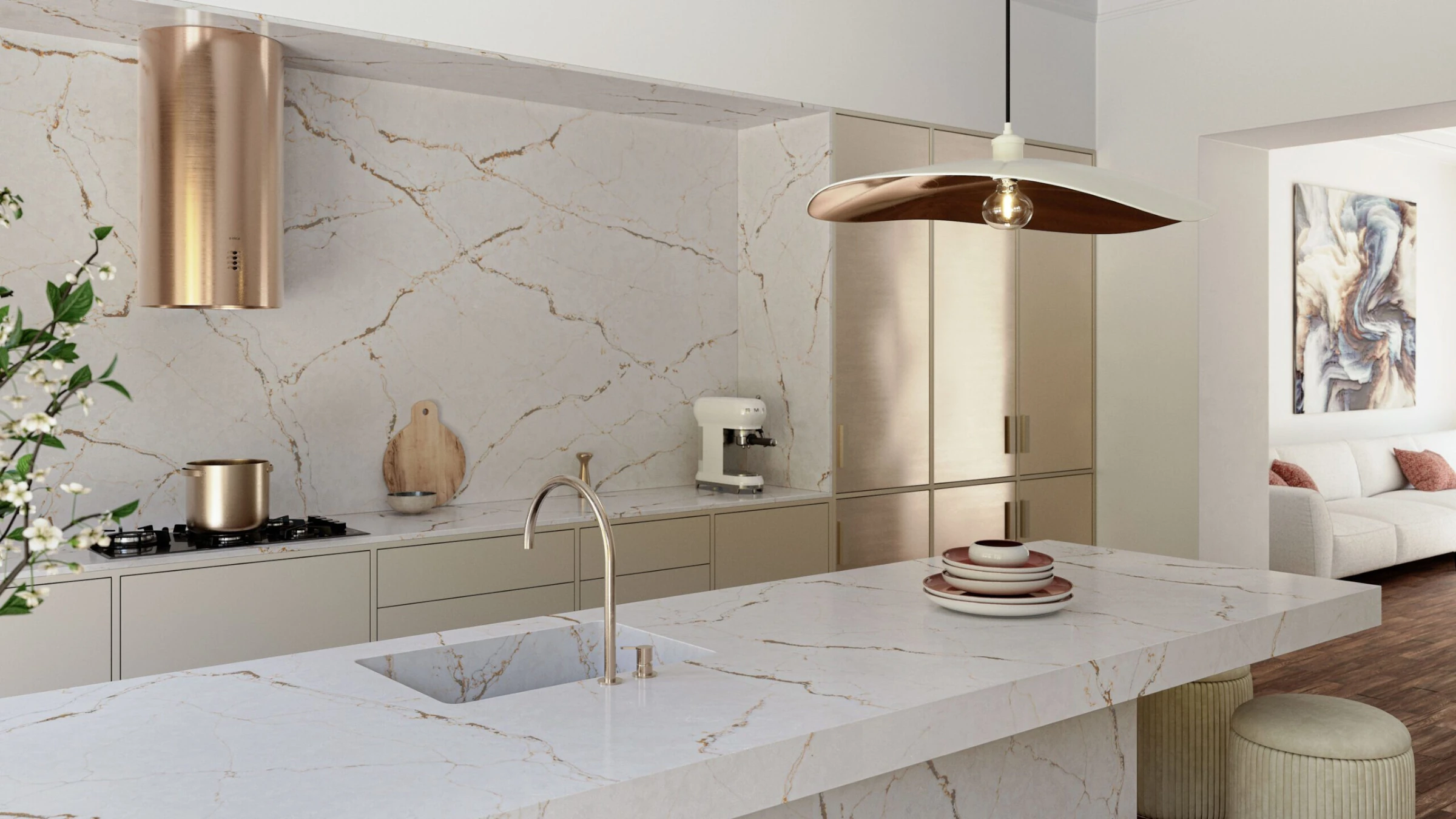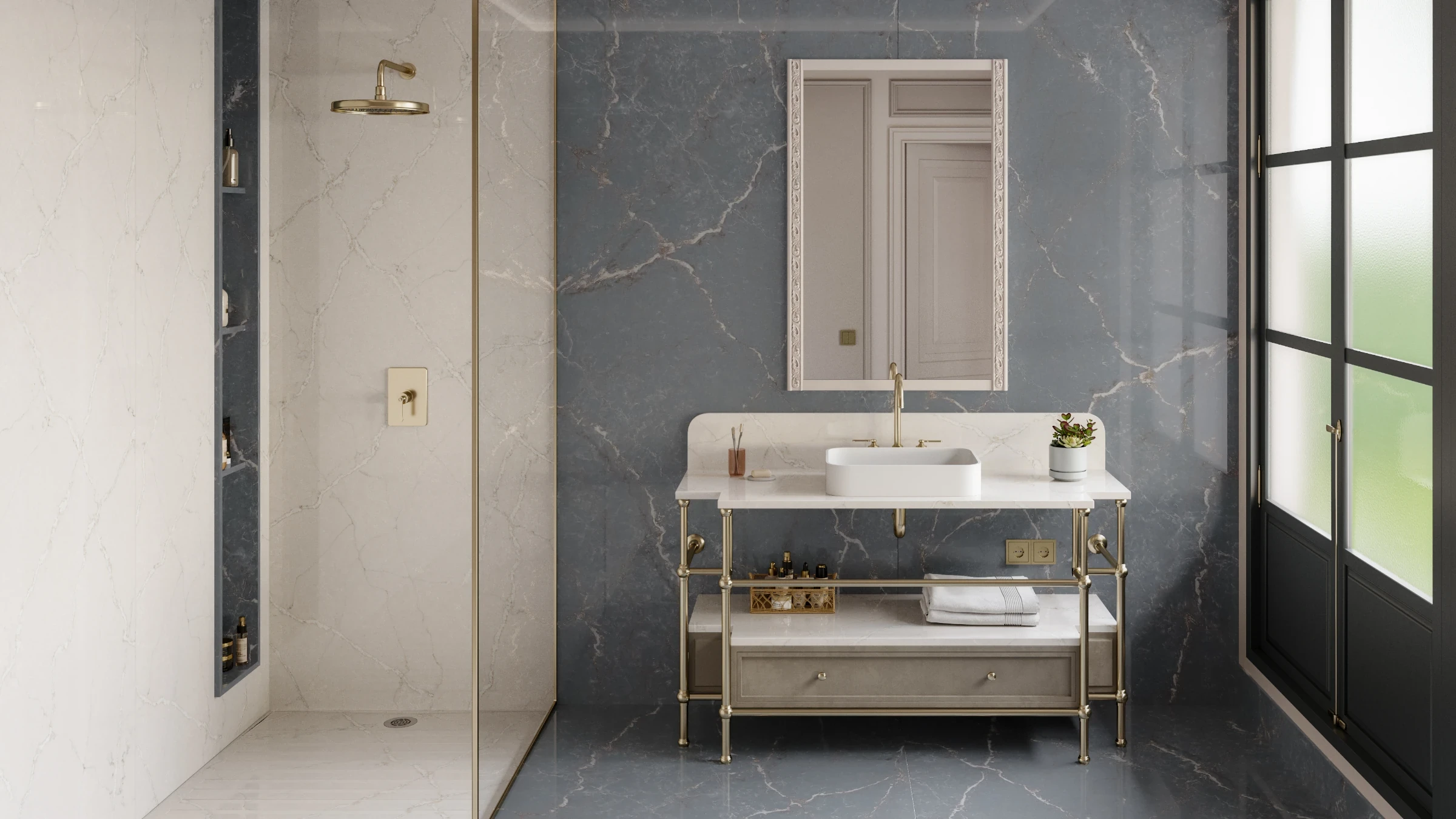We think Silestone XM is a strategic response to concerns about countertop workers experiencing health problems when cutting and installing quartz countertops.
Because of safety concerns about the adverse impact on health due to silica dust inhalation, the move to reduce silica and eventually phase it out completely has begun. The stories about the health impact on workers that do the fabrication (cutting) of slabs or even installation which requires additional on-site cutting have been well documented. In 2024, Australia will be the first country to ban engineered stone countertops. The ban came after a years-long campaign supported by doctors, trade unions, and workers over concerns that the material was causing increased silicosis cases among workers cutting and handling it.
Though Australia’s total ban is likely an overreaction to a handful of companies that did not protect their workers with the recommended and necessary safety precautions, the shift to Silestone XM may simply be a single step in the marketing strategy to move consumers toward low-silica countertops like Silestone XM and maybe eventually into Dekton.
Many industries release silica dust into the air, but have there been all-out bans on them? No.
- Construction companies create massive amount of dust including silica dust and often caught outside of compliance with regulations regarding silica dust on construction sites.
- Manufacturing industries that produce glass, ceramics, brick, concrete, tile, metals, or machinery can release silica dust.
- Oil and gas already have a bad enough rap but they too release lots of silica dust.
- In farming and agriculture, tractors that harvest or prepare soil generate large dust clouds with some silica.
- Mining and quarrying release large amounts of crystalline silica into the air.
Silestone has name recognition
Where engineered stone is still acceptable, porcelain countertops have picked up in popularity and Cosentino, so the maker of Silestone, has already come out with a challenger to Porcelain called Dekton. And since Silestone already has so much name recognition, it seems natural that the name is used to migrate consumers to Silestone XM then eventually into Dekton.
We must say that the variations and names being marketed seems redundant and dilutes the brand. The differences between Silestone, Hyriq options, Silestone XM, various finishes, and Dekton have become convoluted and a bit confusing for the average consumer.
More on Silestone XM Counters
Silestone XM is considered to be “low silica quartz”. Like regular Silestone, it is a material composed primarily of quartz minerals combined with resins and pigments, but unlike regular Silestone countertops, this innovation contains a lower proportion of silicon dioxide, which means lower health risks during fabrication and reduced environmental impact when manufactured.
This type of quartz is especially valued in the construction and interior decoration industry due to its durability and attractive aesthetics, while maintaining the desirable characteristics of conventional quartz, but with additional advantages in terms of sustainability.
Another benefit of low-silica is that it provides a non-porous surface that resists bacterial growth, which makes the countertop or cladding hygienic and easy to clean. Its durability and the variety of designs available make it compete aggressively with other options on the market, while offering a more environmentally friendly alternative.



